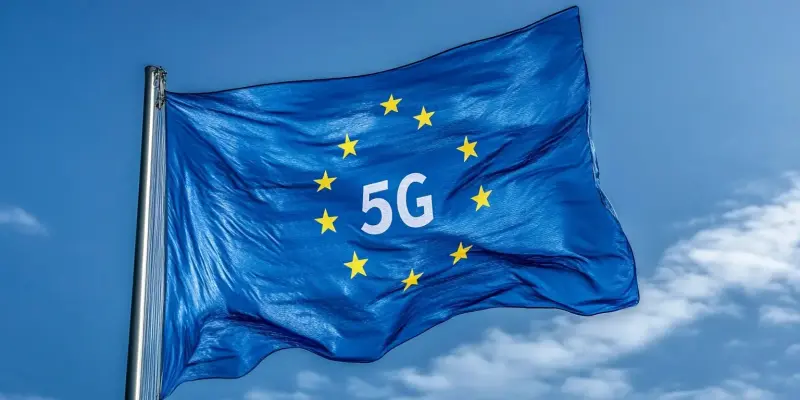The slow adoption of 5G technology in Europe has presented unique challenges compared to the rapid deployment seen in other regions such as North America, East Asia, and Gulf Cooperation Council (GCC) states. By the end of the third quarter of 2024, data from a GSMA report revealed that only about 15% of European operators with live 5G networks had launched 5G standalone (5G SA). This figure is considerably lower compared to more than 30% reported in regions like Asia Pacific and North America, highlighting the operational difficulties European operators face. Despite these challenges, recent 5G standalone launches by EE in the UK and Free in France suggest that deployments are slowly gaining momentum, falling short of the initially anticipated speed.
European operators are also lagging behind in overall 5G experience, with average download speeds only reaching about 230 Mbps by the end of 2023. Although this marked an improvement from 4G speeds, it pales when compared to the much higher speeds observed in GCC and developed Asia Pacific regions. However, Europe still experienced notable penetration of 5G by the end of 2023, with the technology accounting for 30% of mobile connections, translating to around 200 million connections. Countries leading in 5G adoption include Denmark, Finland, Germany, Norway, Switzerland, and the UK, each surpassing the 40% adoption rate.
Current Challenges in 5G Experience
Despite the increasing presence of 5G networks across Europe, users experience less-than-impressive performance compared to their counterparts in other regions. The average download speeds of 230 Mbps, although better than 4G, are significantly lower than those seen in other parts of the world such as the GCC and developed Asia Pacific regions. This speed discrepancy raises concerns about 5G’s potential to drive technological advancements and innovations in Europe. While the current speeds are sufficient for many everyday applications, the transformative applications that 5G promises, such as ultra-high-definition video streaming, augmented reality, and smart city infrastructure, require much higher speeds and lower latency.
The fact that notable operators like EE and Free have only recently launched 5G standalone networks indicates ongoing struggles in deployment. Operational hurdles include the high cost of infrastructure, spectrum regulation differences across countries, and fragmented policy environments. Addressing these issues is critical to enhance the 5G experience for European users. For instance, policy harmonization and streamlined spectrum allocation processes can significantly expedite network deployment. Efforts by leading nations like Germany, UK, and France to boost adoption rates can serve as a roadmap for other European countries to follow suit.
The Future of Cellular IoT in Europe
The GSMA report also delves into the promising future of cellular IoT in Europe, projecting nearly 550 million licensed connections by 2030. This surge in IoT connectivity is expected to be driven by significant contributions from key countries such as Germany, which is anticipated to account for around 25% of total licensed connections. Other major contributors include the UK, France, Italy, and Sweden, each expected to add approximately 10% to the total. The expansion of cellular IoT underscores the increasing importance of seamless, reliable connectivity for a range of applications, from industrial automation to smart agriculture.
European operators are not only focusing on expanding 5G networks but are also investing heavily in advanced AI technologies, including generative AI, to enhance network operations and security. The integration of AI holds the potential to optimize network performance, detect and mitigate cyber threats in real-time, and drive efficiencies in managing complex network infrastructures. Such technological advancements are expected to complement the growth of IoT, ensuring that the upcoming massive deployments are well-supported by robust and intelligent network systems.
Promising Prospects for 5G Adoption
The slow uptake of 5G technology in Europe has brought unique challenges, contrasting the rapid deployment seen in regions like North America, East Asia, and Gulf Cooperation Council (GCC) states. As of Q3 2024, GSMA data showed that only about 15% of European operators with live 5G networks had launched 5G standalone (5G SA). This figure is significantly lower than the 30% reported in Asia Pacific and North America, underscoring the operational struggles of European operators. Despite these hurdles, recent 5G SA launches by EE in the UK and Free in France indicate a gradual increase in deployment, though slower than initially expected.
Moreover, European operators are trailing in overall 5G experience. By the end of 2023, average download speeds hovered around 230 Mbps, an improvement over 4G but less impressive compared to speeds in GCC and developed Asia Pacific regions. Nonetheless, 5G technology penetrated 30% of mobile connections in Europe, totaling about 200 million by late 2023. Leading countries in 5G adoption include Denmark, Finland, Germany, Norway, Switzerland, and the UK, each boasting an adoption rate exceeding 40%.

